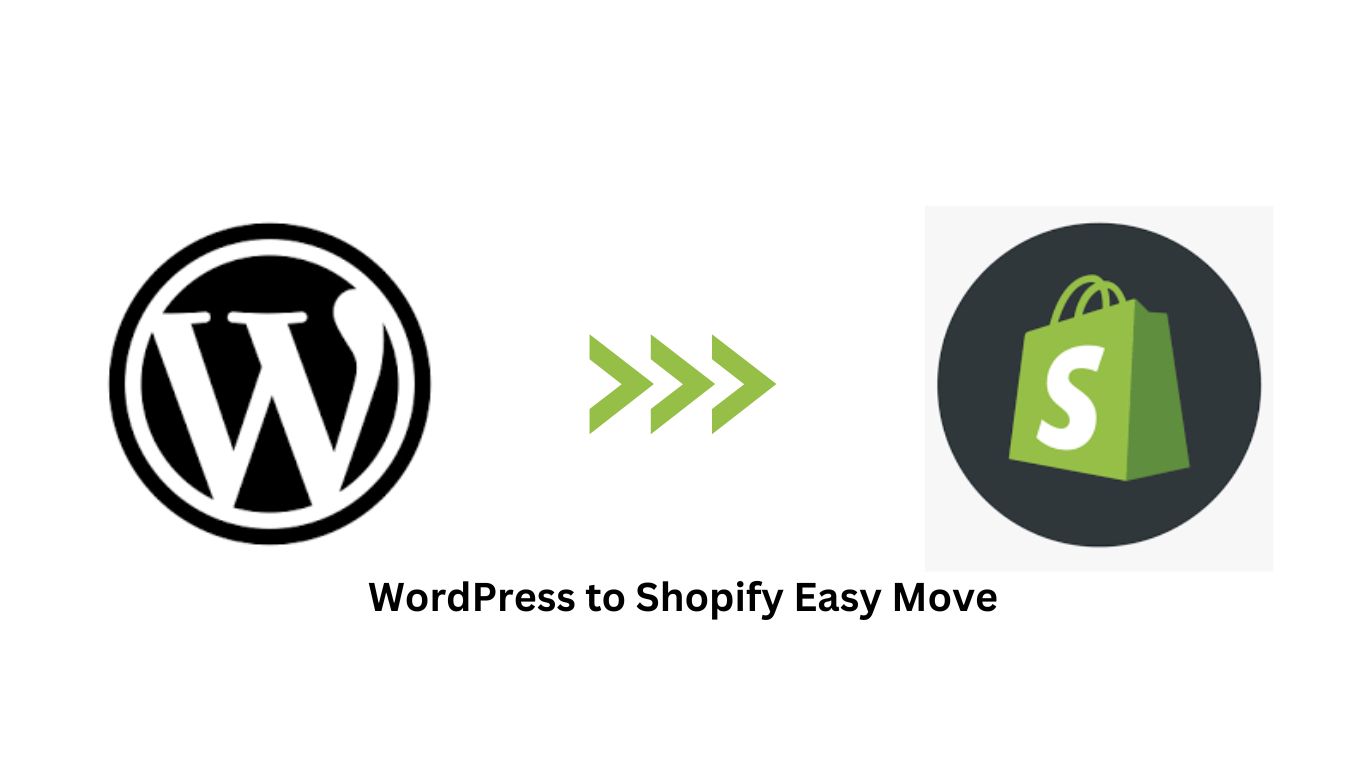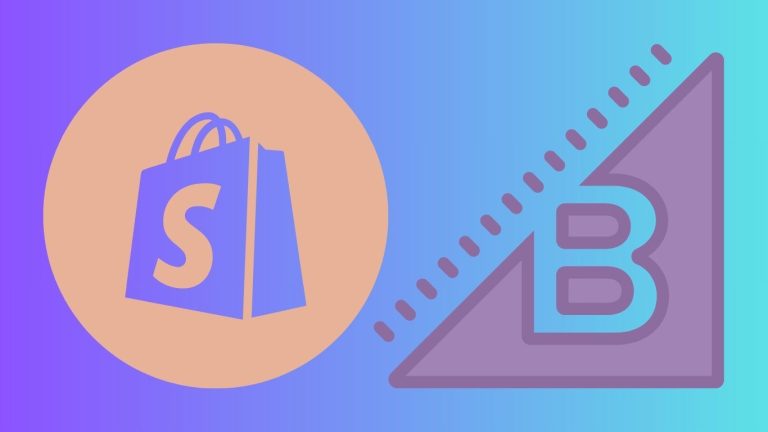WordPress to Shopify Easy Move: Migrate Your Store in 5 Simple Steps #MigrateNow #ShopifySuccess
Have you outgrown the limitations of WordPress and are longing for a powerful, feature-rich platform to take your online store to new heights? Look no further than Shopify! This e-commerce giant offers a user-friendly interface, robust features, and seamless integrations, making it the perfect solution for businesses seeking to accelerate their growth. But before you can unlock the Shopify magic, you need to navigate the migration process. Fear not, fellow entrepreneur, for this guide will illuminate your path with the WordPress to Shopify Easy Move – a roadmap to a smooth and stress-free transition.
Unleashing the Power of Shopify
Why choose Shopify over WordPress? While both platforms offer e-commerce capabilities, Shopify is built specifically for online stores, providing a comprehensive and dedicated ecosystem for managing your business. Unlike WordPress, which requires plugins and extensions to achieve similar functionality, Shopify offers built-in features for managing products, inventory, orders, payments, shipping, and more.
Here’s why Shopify might be the perfect fit for your online store:
- Enhanced Scalability: Shopify is designed to accommodate your growth, allowing you to scale your business with ease. You’ll have access to powerful tools and resources to manage increasing traffic, orders, and inventory.
- Seamless Integrations: Shopify integrates seamlessly with your favorite marketing, accounting, and shipping tools, streamlining your workflow and enhancing efficiency.
- Secure and Reliable: Shopify boasts a robust security infrastructure and industry-leading uptime, giving you peace of mind knowing your store is always in good hands.
- Dedicated Support: Shopify offers exceptional customer support through various channels, ensuring you receive the help you need whenever you need it.
Is Shopify Right for You?
While Shopify boasts undeniable advantages, it’s crucial to assess if it aligns with your specific needs and budget. Consider factors like your store size, product complexity, and technical expertise. If you’re unsure, Shopify offers a free 14-day trial, allowing you to explore the platform and test its capabilities before committing.
Step 1: Prepare for Takeoff: Pre-Migration Checklist
Before embarking on your migration journey, it’s essential to prepare your WordPress store like a seasoned pilot before a flight. Here’s your pre-migration checklist:
Backup Your Data:
Data loss during migration can be catastrophic. Create a complete backup of your WordPress site, including your theme, plugins, data, and media files. This will serve as your safety net in case of unforeseen circumstances.
Organize Your Products and Categories:
Streamline the migration process by meticulously organizing your products and categories. Ensure your product information is accurate and consistent, and categorize them in a logical manner.
Prepare Your Content:
Optimize your content for Shopify by ensuring it adheres to their formatting guidelines. This includes images, videos, and any embedded code.
Additional Considerations:
- Review your WordPress plugins: Identify which plugins are essential for your store and determine if they have corresponding counterparts on Shopify.
- Research Shopify themes: Explore the diverse range of Shopify themes to find one that aligns with your brand identity and desired functionality.
- Test your site thoroughly: Before migrating, test your WordPress site for functionality and compatibility issues.
Step 2: Choose Your Flight Path: Manual vs. Automated Migration
Two primary paths await you: manual migration or automated migration. Each approach has its advantages and disadvantages:
Manual Migration:
Advantages:
- Greater control: You have complete control over the migration process, allowing for customization and adjustments.
- Cost-effective: Manual migration is free, requiring only your time and technical expertise.
- Detailed understanding: You gain a thorough understanding of your data and the migration process.
Disadvantages:
- Time-consuming: Manual migration can be a lengthy process, especially for large stores.
- Technical expertise required: This method requires some technical knowledge of data migration and WordPress/Shopify platforms.
- Vulnerable to errors: Manually transferring data increases the risk of errors and inconsistencies.
Automated Migration:
Advantages:
- Fast and efficient: Automated migration apps can quickly transfer your data with minimal effort.
- User-friendly: These apps are designed for ease of use, even for users with limited technical knowledge.
- Reduced risk of errors: The automation process minimizes the chances of human error.
Disadvantages:
- Costly: Automated migration apps often require paid subscriptions or fees.
- Limited control: You have less control over the migration process, making it difficult to customize or adjust settings.
- Potential for compatibility issues: Not all apps are compatible with all versions of WordPress and Shopify.
Step 3: Take Flight: Executing Your Chosen Migration Method
Manual Migration: Step-by-Step Guide
- Export Your Data from WordPress: Utilize a plugin like “WP All Export” or “Export Products for WooCommerce” to export your products, categories, customers, orders, and other relevant data in a format compatible with Shopify.
- Import Data into Shopify: Choose a Shopify import app like “LitExtension” or “Cart2Cart” to import your exported data into your Shopify store.
- Testing and Troubleshooting: After importing, meticulously test your store to ensure everything is functioning correctly. Identify and resolve any errors or inconsistencies that may arise.
Automated Migration: Using Migration Apps and Services
- Choose the Right Tool for Your Needs: Research and compare various Shopify migration apps based on your needs, budget, and technical expertise. Popular options include Migrate Guru, ShopMigration, and Cart2Cart.
- Connect Your Platforms: Authorize the migration app to access both your WordPress and Shopify accounts to facilitate data transfer.
- Configure Your Settings: Specify the data you want to migrate and choose any additional settings offered by the app.
- Initiate the Migration: Start the migration process and monitor its progress through the app’s interface.
- Review and Verify: Once the migration is complete, thoroughly review your Shopify store to ensure all data and functionality are intact.
Step 4: Touchdown at Shopify: Setting Up Your Store
Now that you’ve landed on Shopify, it’s time to set up your store for success:
Customize Your Shopify Store: Branding and Design
- Choose a Theme: Explore Shopify’s theme store and select one that reflects your brand identity and target audience.
- Customize the Theme: Customize your chosen theme’s colors, fonts, layout, and other elements to create a unique and visually appealing storefront.
- Add Your Brand Assets: Upload your logo, favicon, and other branding elements to further personalize your store.
Add Products and Collections:
- Import Products: Utilize the product import features in Shopify or the app you used for migration to add your products to your store.
- Create Collections: Organize your products into logical collections for easy navigation and browsing.
- Optimize Product Pages: Add detailed product descriptions, high-quality images, and clear pricing to entice customers.
Configure Payment Gateways and Shipping Options:
- Connect Your Payment Gateway: Integrate a payment gateway like Stripe or PayPal to accept online payments securely.
- Set Up Shipping Options: Configure your shipping rates and zones, and choose preferred shipping carriers.
- Define Return and Refund Policies: Establish clear return and refund policies to foster customer trust and satisfaction.
Step 5: Celebrate Your Success: Optimizing Your Shopify Store
You’ve made it! Your store is now live on Shopify, but the journey doesn’t end there. Here’s how to optimize your store for long-term success:
SEO Best Practices for Shopify:
- Keyword Research: Identify relevant keywords for your products and target audience to improve organic search visibility.
- Optimize Titles and Meta Descriptions: Include relevant keywords in your product titles and meta descriptions to entice clicks.
- Build Backlinks: Secure backlinks from high-quality websites to boost your website’s authority and ranking.
- Utilize Shopify SEO Apps: Explore Shopify apps like SEO Manager and Google Shopping Feed to further enhance your SEO efforts.
Marketing Strategies for Shopify:
- Social Media Marketing: Build a presence on relevant social media platforms and engage your audience with captivating content.
- Email Marketing: Create targeted email campaigns to promote new products, offer discounts, and stay connected with your customers.
- Paid Advertising: Utilize platforms like Google Ads and Facebook Ads to reach a wider audience and drive traffic to your store.
Ongoing Optimization and Support:
- Track Your Analytics: Monitor your store’s performance through Shopify’s analytics dashboard to identify areas for improvement.
- Continuously Learn and Adapt: Stay updated on e-commerce trends and best practices to ensure your store remains competitive.
- Seek Professional Support: When needed, seek assistance from Shopify experts or agencies for advanced optimization and marketing strategies.
Conclusion: The Power of Shopify Awaits
By following the WordPress to Shopify Easy Move, you’ve successfully migrated your online store to a powerful platform poised for growth. Remember, this is just the beginning. Embrace the limitless potential of Shopify and leverage its features, resources, and integrations to skyrocket your business to new heights. Invest in continuous learning, optimize your store diligently, and adapt to the ever-evolving e-commerce landscape. With dedication and the right tools, you can transform your online store into a thriving haven for your products and brand.
Frequently Asked Questions About WordPress to Shopify Migration
Q1: How long does it take to migrate from WordPress to Shopify?
The migration time depends on the size and complexity of your store, your chosen migration method, and your technical expertise. For small stores with simple data, a manual migration can be completed within a few hours. However, large stores with complex product variations and extensive data might take several days or even weeks. Automated migration tools can expedite the process, but they might require additional fees.
Q2: Will my SEO ranking be affected by the migration?
While some temporary fluctuations in ranking might occur during the migration process, taking the necessary SEO precautions can minimize the impact. Optimizing your product titles, meta descriptions, and image alt tags for relevant keywords is crucial. Additionally, submitting your Shopify store to search engines and creating a sitemap will help you retain your ranking and even improve it in the long run.
Q3: Can I migrate my blog content to Shopify?
Yes, you can migrate your blog content to Shopify using various methods. Some migration apps offer built-in blog migration features, while others might require exporting your blog content as a CSV file and importing it into Shopify. Remember to optimize your blog posts for Shopify’s platform and structure to ensure seamless integration and user experience.
Q4: What are the benefits of migrating to Shopify compared to WordPress?
Shopify offers several advantages over WordPress for managing an online store. It provides a dedicated e-commerce platform with built-in features for managing products, orders, payments, shipping, and more. Additionally, Shopify boasts a vast app ecosystem, allowing you to integrate various tools and functionalities to enhance your store’s capabilities.
Q5: Do I need to be a tech expert to migrate to Shopify?
While some technical knowledge is beneficial, you don’t necessarily need to be a tech expert to migrate to Shopify. If you have basic computer skills and are comfortable following instructions, you can perform a manual migration using available resources and tutorials. Alternatively, several automated migration tools are available to simplify the process, even for those with limited technical experience.
Q6: How can I ensure a smooth and successful migration?
Planning and preparation are key to a smooth and successful migration. Back up your WordPress data regularly, organize your products and categories, and choose the migration method that best suits your needs. Thoroughly testing your store after the migration is also crucial to identify and resolve any potential errors or inconsistencies.
Q7: What are some common challenges during migration?
Some common challenges during migration include data loss, duplicate content, broken links, and compatibility issues. However, taking precautions like backing up your data, carefully exporting and importing content, and using compatible tools and apps can help mitigate these risks.
Q8: What are the costs involved in migrating to Shopify?
The cost of migrating to Shopify depends on the size of your store, chosen migration method, and any additional services you might need. Manual migration is free, but it requires more time and effort. Automated migration tools typically charge monthly or one-time fees, and e-commerce professionals might offer migration services for larger stores.
Q9: How can I optimize my Shopify store for success after migration?
Once your store is live on Shopify, optimizing it for success is crucial. Implement SEO best practices, utilize marketing strategies to attract customers, and continuously monitor your store’s performance to identify areas for improvement.
Q10: What resources can I access for further guidance?
Shopify provides extensive documentation and tutorials on migrating your store to their platform. Additionally, various online resources, blogs, and e-commerce communities offer helpful tips and advice.
Seeking professional assistance can also be beneficial, especially for complex migrations or stores requiring advanced customization.
Get Rizwan’s Expert Assistance
Do you want to migrate your WordPress store to Shopify but need guidance and support? Rizwan provides a range of services to help you navigate the entire process seamlessly, from planning and preparation to migration execution and post-migration optimization. Checkout the blog posts.
Visit the services page to learn more about Rizwan’s e-commerce expertise and how he can help your online store thrive. Checkout the projects.
Connect with Rizwan on LinkedIn
Stay up-to-date with the latest e-commerce trends and insights by connecting with Rizwan on LinkedIn. He regularly shares valuable content and resources to help businesses succeed in the online world.
By leveraging Rizwan’s expertise and knowledge, you can ensure a smooth and successful migration to Shopify, unlocking the platform’s full potential and propelling your online store to new heights.
Dive Deeper with These Informative Links:
Explore Valuable Resources for a Comprehensive Understanding:
- Shopify’s Migration Guide: https://www.hulkapps.com/products/migrate-wordpress-to-shopify
- WordPress to Shopify Easy Move: https://www.youtube.com/watch?v=s4W1gb4yDbo
- LitExtension – WordPress to Shopify Migration: https://litextension.com/blog/wordpress-to-shopify-migration/
- Cart2Cart – WordPress to Shopify Migration: https://www.shopping-cart-migration.com/shopping-cart-migration-options/6694-woocommerce-to-shopify-migration
- Ultimate WordPress to Shopify Migration Guide: https://cart2cart.net/shopping-cart-migration-options/woocommerce-to-shopify-migration
- SEO for Shopify: https://www.shopify.com/blog/shopify-seo
- Shopify Marketing Tools: https://www.shopify.com/marketing-tools
- Shopify App Store: https://www.shopify.com/blog/free-shopify-apps
- E-commerce Success Stories: https://influencermarketinghub.com/shopify-plus-stores/
- Shopify Help Center: https://help.shopify.com/
Further Enhance Your Knowledge with Additional Resources:
- Moz Beginner’s Guide to SEO: https://moz.com/beginners-guide-to-seo
- Google Search Central: https://developers.google.com/search/docs/fundamentals/seo-starter-guide
- HubSpot Blog: https://blog.hubspot.com/
- Ecommerce News: https://www.ecommercebytes.com/
- Shopify Blog: https://news.shopify.com/
Gain Expert Insights from Industry Leaders:
- Neil Patel: https://neilpatel.com/
- Brian Dean: https://backlinko.com/
- Rand Fishkin: https://moz.com/
- Ahrefs Blog: https://ahrefs.com/blog/
- Shopify Experts: https://www.shopify.com/partners/directory







